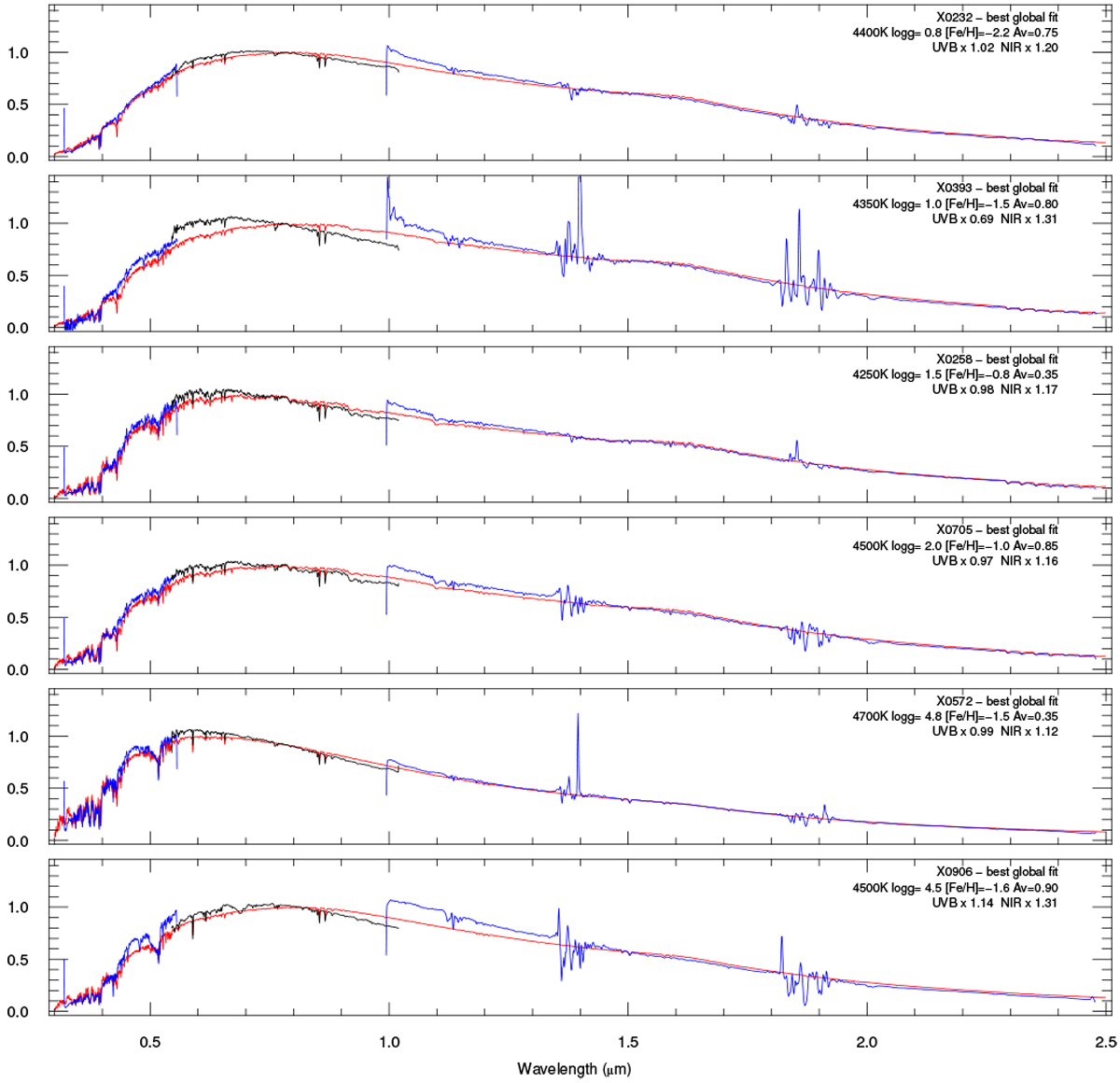Fig. C.5

Typical comparisons between XSL and GSL energy distributions for low metallicity stars with estimated Teff between 4000 and 5000 K, at R = 500, when adopting the parameters of Arentsen et al. (2019) unchanged. Gravity increases from top to bottom: HD 165195(X0232), HD 1638 (X0258), NGC 68381037 (X0705), LHS 1841 (X0572), LHS 343 (X0906). The discontinuities between the UVB, VIS and NIR segments of the XSL data appear when the general energy distributionis not well matched by the models, because our method scales each arm independently: no other AV +scaling combination would provide a smaller discrepancy D (Eq. (1)) across all wavelengths. In other words, D would be worse if the UVB, VIS and NIR segments were first merged and AV was estimated subsequently.
Current usage metrics show cumulative count of Article Views (full-text article views including HTML views, PDF and ePub downloads, according to the available data) and Abstracts Views on Vision4Press platform.
Data correspond to usage on the plateform after 2015. The current usage metrics is available 48-96 hours after online publication and is updated daily on week days.
Initial download of the metrics may take a while.


